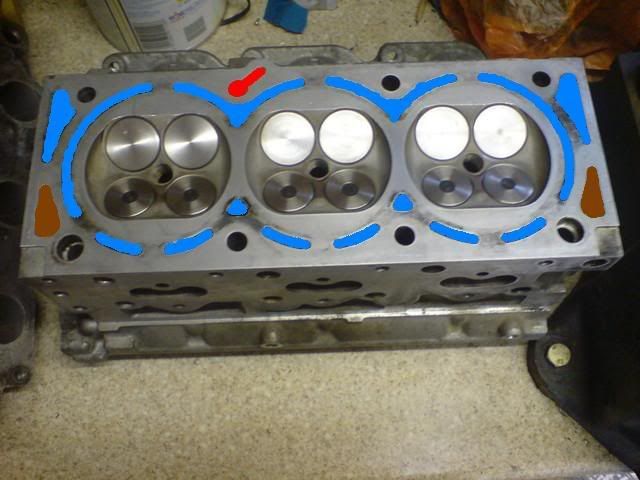So, starting with the basics, lets consider what oil gets to the top of the engine and how.
Here is a pic of the passages through the head and head gasket on the V6 cylinder head (yes a real one!)

The blue areas are coolant passages, under normal running, these are pressurised but drop to approx. atmospheric pressure as the engine cools down - failure of a gasket or cylinder head here would mean a water leak (normally at the rear of the head) or severe coolant consumption accompanied with a miss fire. Note: the 2.6 has multi layer steel gaskets and true gasket failure is all but unheard of.
The brown areas are oil return passages where the oil drops back to the sump. Thanks to the breather system, these are under a slight vacuum (assuming breathers are not blocked!).
The small red area is THE only place where pressurised oil passes and is nicely away from anything other than the head edge. This is protected by a copper insert in the gasket and is on the valley side of the head.....so a long way from the manifolds, a failure here would result in pressurised oil getting into the valley (never ever seen a failure like this)
So, to get an oil leak, that high up the engine that it can get near the manifolds, THE only place it can come from is the cam covers or maybe the O ring at the base of the oil filler tube.
To add further evidence......the head gasket actually sits BELOW the exhaust manifolds.
So an oil leak of this type, being associated with the head gasket, can only occur if there is some sort of anti gravity device in the vicinity of head gasket allowing oil to travel upwards and even then, it would require a failure of the breather system to allow the oil return points to be pressurised.

 Author
Topic: V6 oil leak saga (Read 3570 times)
Author
Topic: V6 oil leak saga (Read 3570 times)

